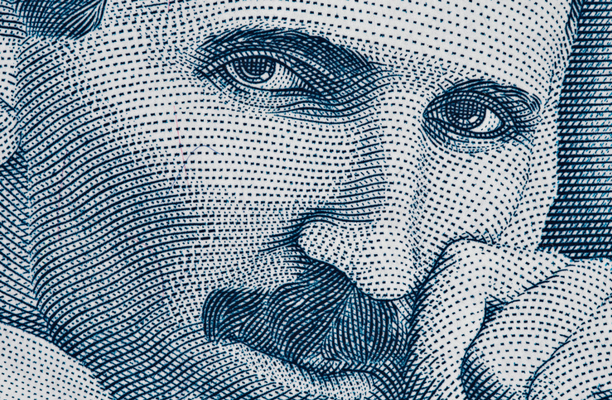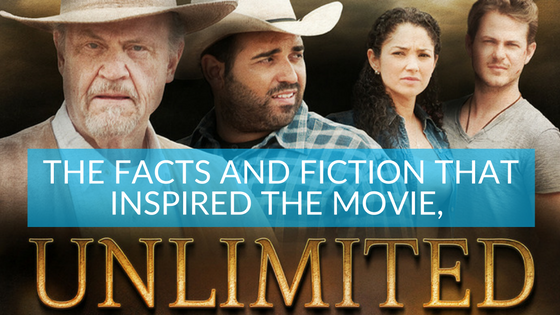In the Christian movie, “Unlimited,” we’re presented with the reminder that, “With God, all things are possible.” This science fiction flick combines futuristic ideas with experiments from the past, set in a small orphanage in Mexico. Scattered throughout the movie are references to Harold Finch’s NASA career, and of course the device that main character Simon struggles to repair throughout the film- the one that will create unlimited electricity.
“Unlimited,” now available on PureFlix.com, is loosely based on real-life events, and its roots in fact make the story all the more compelling. But when watching “Unlimited,” you may be wondering: what is fact, and what is fiction? The answers might surprise you.
Fact: Nikola Tesla did try to invent a way to wirelessly transmit electricity.
The device in the movie, the “Unlimitado, was” the fictional Professor Vasquez’s attempt to create an unlimited power source for remote areas in Mexico (like the orphanage in the film) and around the world.
In one scene, Harold shows Simon a video of the professor’s semi-successful attempt to light a room full of hanging light bulbs that are unattached to a wired power source. Remarkably, when the Star-Wars-like device lights up, so do all of the light bulbs. “Unlimitado” provides wireless, and potentially unlimited, electricity.
It may sound far-fetched, but the concept is rooted in fact. Well, sort of, anyway.
In 1901, renowned physicist and inventor Nikola Tesla built the Wardenclyffe tower (also known as Tesla Tower) in Shoreham, New York. Wardenclyffe was an early wireless transmission station funded by J.P. Morgan, and was originally built to transmit messages across the Atlantic to England.
Tesla didn’t merely want a way to transmit messages or even image and sound, though. He had plans to scale Wardenclyffe up dramatically and incorporate his ideas for wireless power transmission, not unlike how Unlimitado lit up the bulbs around it without a direct connection.
Tesla’s vision was never implemented, as his financial backer (Morgan) refused to continue funding the project. It was abandoned in 1906, and later demolished in 1917.
Almost a century later, Wardenclyffe Tower remains a science fiction legend, and rumors, conspiracy theories, and stories like “Unlimited” are keeping shadows of Tesla’s ideas alive today.

Nikola Tesla, pictured on Serbian currency
Fiction: Tesla’s invention would have created unlimited power.
While “Unlimitado” may have been a source of never-ending, pollution free energy, Tesla’s invention could not have been. Wardenclyffe may have been able to transmit electricity wirelessly, but to do so would not be without cost. The tower itself was powered by a 200 Killowatt generator.
Tesla patented his ideas in 1901, calling his device, “Apparatus for the Utilization of Radiant Energy.” You can read the patent for yourself, but it is important to understand that what Tesla describes is very much like a solar panel. He wrote,
“The apparatus being arranged as shown, it will be found that when the radiations of the sun or of any other source capable of producing the effects before describe fall upon the plate P an accumulation of electrical energy in the condenser C will result.”
This is not to say that Tesla’s work is insignificant. Quite the opposite in fact. Tesla is considered by many to be the greatest inventor of the 20th Century, and some say even of all time. It is no surprise, really, that exciting accomplishments in science, especially ones surrounded in myth, become the basis for pop culture phenomenons and films like “Unlimited.”
More Facts: Harold Finch, NASA, and the 3 Keys to Success
The science behind “Unlimited” is far from the only thing rooted in fact. Many of the characters are based on real people and real life events, especially the character played by Fred Thompson: Dr. Harold Finch.
Harold Finch is a real man with an incredible story. He worked as a project director for the Apollo space mission that landed the first astronauts on the moon, and he is responsible for the “Barbeque Roll” technology that regulated the dramatic temperature swings of space. He founded two successful businesses, worked in Indian and South American orphanages, published a book called “Success!: 4 Keys to Unlock Your Unlimited Potential,” and now sponsors free training seminars for anyone who wants to learn those keys.
“Unlimited” was written in part to share the life work of Dr. Finch, and many elements of the story are based on his life. Besides the character that shares his name, Harold shared with Pure Flix Insider that the character Juan is based on a boy named Joseph. Harold met Joseph in India years ago, and he now runs the orphanage that he was raised in.
Harold Finch told Pure Flix Insider that the protagonist, Simon, is based on a younger version of himself:
“Simon was me as a young boy. I came out of the Depression with an inferiority complex, low self esteem, as we were really really poor... So I just never thought that I could ever have a chance to be anything other than just poor. My mother told me when I guess I was having a pity party, she said, ‘Harold, you’re not poor- you’re rich, you have a God that loves you and He gave you a good mind and you have to decide whether you’re going to use it or not. If you don’t use it you can go ahead and fulfill your prophecy of being poor forever, or ![]() you can accomplish anything you set your mind to.'
you can accomplish anything you set your mind to.'
And that was great motivation for me, and many times as I was growing up and trying to get an education... and it seemed impossible... I would always just think back to those wise words of my mother and it would keep me going. And even in some of the projects that just seemed like I couldn’t get them to work, I just remembered, “You can do anything you set your mind to.”
You can read more about Dr. Harold Finch and the message behind, “Unlimited,” in Nothing Is Impossible: The Life and Work of Dr. Harold Finch. And of course, if you haven’t seen the film yet you can watch it for free during your one month Pure Flix trial at PureFlix.com.

Sarah Hartland
Sarah Hartland knew she wanted to be a writer from the time she wrote her first short story in the fourth grade. By the time she was in high school, she had written two novellas and countless short stories. It was her love of storytelling that led her into marketing and media.
Sarah freelanced throughout her time at Colorado Christian University, where she graduated with a Bachelor's degree in Business Administration. At CCU, Sarah competed in speech and debate across the country, securing multiple awards and a national debate championship. She co-lead CCU's first-ever broadcast media program, CCU.TV, and served as the program's Student Producer during her senior year.
When she's not writing blog posts or editing a video, Sarah loves to swing dance, ski, travel, or visit her seven younger siblings in Montana.


COMMENTS